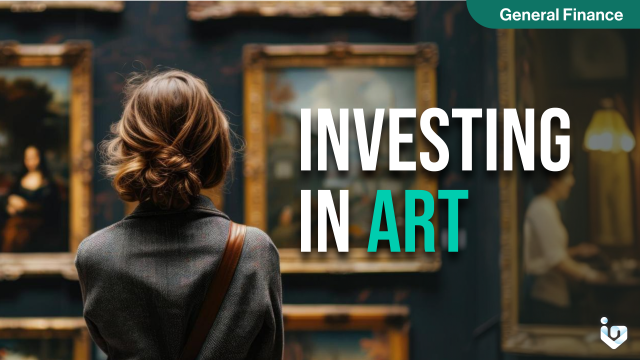Investing in art has gained popularity as an alternative asset class. It offers both aesthetic pleasure and financial returns. Unlike traditional investments, art provides a tangible asset that can appreciate over time. This article explores the nuances of investing in art, its benefits, and the considerations to keep in mind.
The Appeal of Art Investment
Art investment appeals to a wide range of investors. It combines the love for art with the potential for financial gain. The global art market has seen significant growth, with sales reaching $65.1 billion in 2021. This growth highlights the increasing interest in art as an investment.
Diversification and Stability
One of the primary benefits of investing in art is diversification. Art has a low correlation with traditional asset classes like stocks and bonds. This means that art can provide stability during market volatility. When stock prices dip, art tends to hold its value, offering a hedge against market fluctuations.
Inflation Hedge
Art can also act as a hedge against inflation. As a tangible asset, art can perform well during periods of high inflation. Unlike cash, which loses value over time, art can appreciate, preserving wealth. This makes art an attractive option for investors looking to safeguard their assets.
The Role of Digital Art and NFTs
The rise of digital art and non-fungible tokens (NFTs) has revolutionized the art market. NFTs allow for the ownership of digital art, making art investment more accessible. Platforms like Masterworks enable investors to collectively own pieces of art, democratizing the market³. This shift has opened up new opportunities for art investors.
Selecting the Right Art
Choosing the right piece of art is crucial for a successful investment. Investors should research artists, their markets, and growth potential. Understanding the historical performance of an artist’s work can provide insights into future value. Additionally, investors should consider the condition and provenance of the artwork.
Long-Term Investment Strategy
Art investment requires a long-term perspective. Unlike stocks, which can be traded frequently, art is best held for extended periods. This allows the artwork to appreciate in value. Patience and selectivity are key to achieving positive returns from art investment.
Risks and Challenges
Investing in art is not without risks. The art market can be unpredictable, and prices can fluctuate. Additionally, art requires proper storage and maintenance to preserve its value². Investors should also be aware of the potential for forgery and fraud in the art market. Conducting thorough due diligence is essential to mitigate these risks.
The Importance of Expertise
Having expertise in the art market can significantly enhance investment outcomes. Art advisors and consultants can provide valuable insights and guidance. They can help investors navigate the complexities of the market and make informed decisions. Building a network of experts can be beneficial for both novice and experienced art investors.
The Emotional Aspect
Investing in art is not just about financial returns. It also involves an emotional connection to the artwork. Many investors derive joy and satisfaction from owning pieces of art they love. This emotional aspect adds a unique dimension to art investment, making it a fulfilling experience.
Conclusion
In conclusion, investing in art offers a unique blend of aesthetic pleasure and financial potential. It provides diversification, stability, and a hedge against inflation. The rise of digital art and NFTs has made art investment more accessible. However, it requires careful selection, a long-term perspective, and expertise. Despite the risks, the emotional and financial rewards of art investment can be substantial. By understanding the nuances of the art market, investors can make informed decisions and enjoy the benefits of this alternative asset class.

